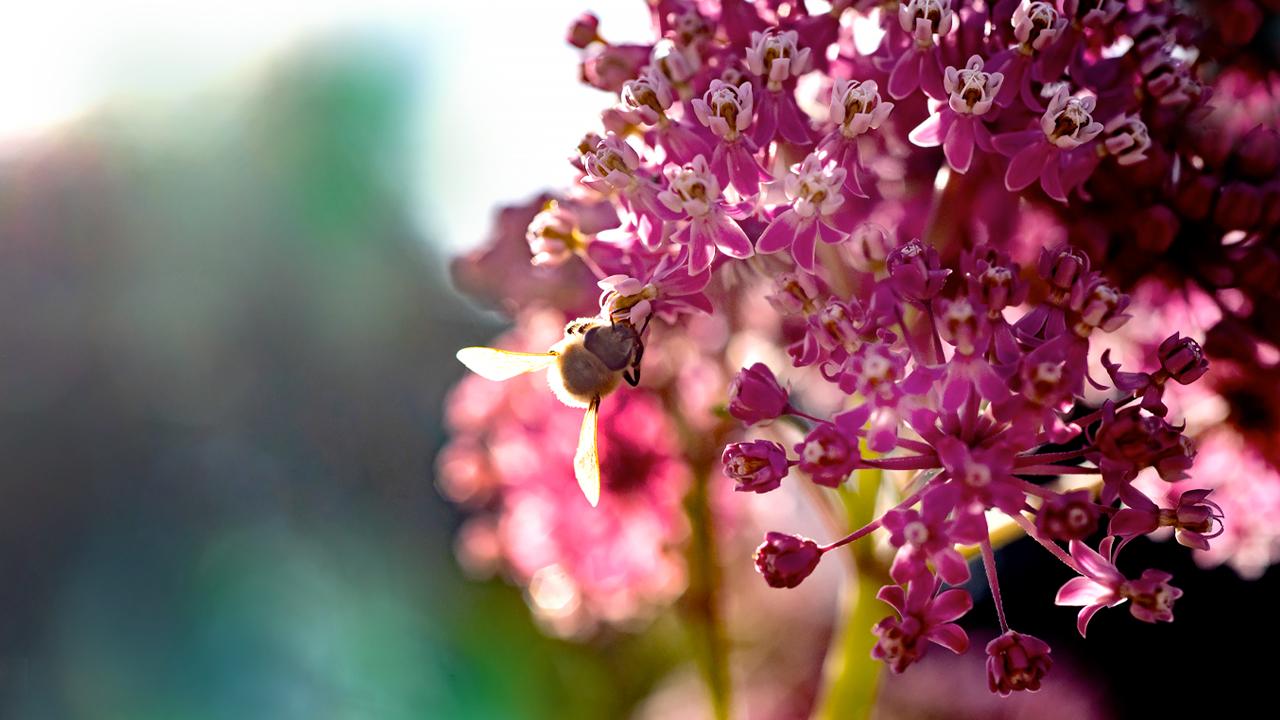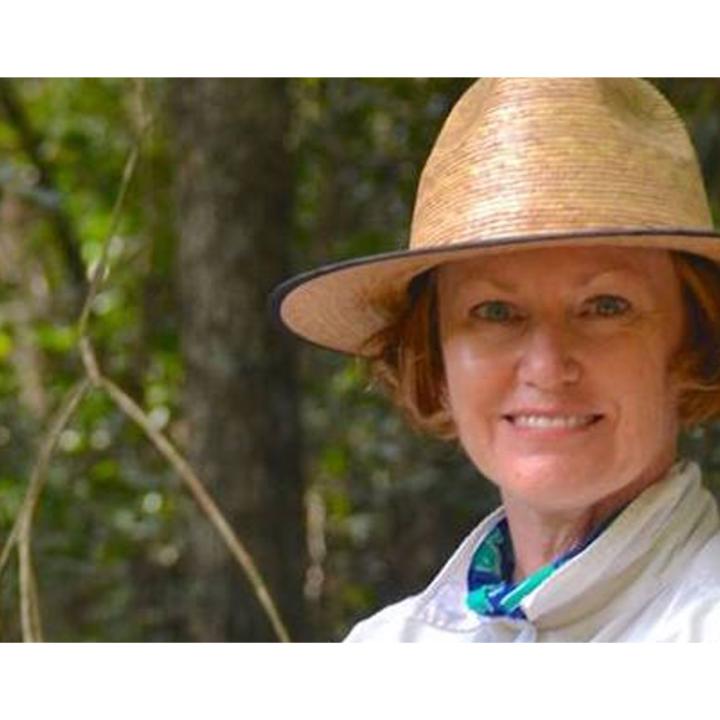
Louise Egerton-Warburton, Ph.D.

-Fulbright Postdoctoral Fellow, Australian-American Fulbright Foundation, The University of California, 1994- 97
-Adjunct Professor, Weinberg College of Arts & Sciences, Northwestern University, 2003 – present
Professional societies
Member, Soil Science Society of America
Member, Society for Ecological Restoration
Committee, SSSA Applied Science Award (2021- 2024)
Editorial
2017 – present Handling Editor, Restoration Ecology
2017 – present Editorial Board, Geoderma Regional
- Mycorrhizal fungal diversity, functioning, and ecology
- Shifting precipitation, land-use, and soil fertility effects on plant-mycorrhizal interactions
- Integrating mycorrhizal ecology into restoration practice
- Plant perennialization effects on soil health and ecosystem services
My research focuses on furthering our understanding of the mycorrhizal symbiosis and its role in plant community composition and function.
Although largely hidden from us, mycorrhizal fungi are ubiquitous symbiotic partners within the roots of almost all land plants. These symbioses enhance nutrient and water uptake by plants, and also play a key role in stabilizing soils and enhancing carbon sequestration. As a result, any changes in the abundance of these fungi could feed back to influence the plant community and ecosystem health.
Current research projects in the lab reflect our collective interests in documenting the diversity of mycorrhizal fungi, their role in plant survival, and their responses to alterations in climate, land-use, and restoration:
-
New roots for restoration. Explaining the wide diversity of species we see in nature is one of the central challenges in all of ecology. Another is how to restore this diversity when a community has been extensively degraded, such as those in the tallgrass prairie. In the broadest sense, we are interested in arbuscular mycorrhizal fungal (AMF) communities and the mechanisms that influence nutrient acquisition, plant growth, and root-shoot interactions. Our previous work has explored the use of soil amendments and mycorrhizal inoculation in restoration, and tested soil factors that limit effective restoration. Our new work asks how intra-specific plant variation influences mycorrhizal diversity and function and, in turn, how these changes might feedback to alter plant community assembly. Collaborators: BII New Roots for Restoration members
-
Perennial crops and carbon sequestration. Food is a critical and overlooked environmental issue. The challenge: how to feed a burgeoning world population while increasing soil carbon sequestration and conserving diversity. Our research explores how perennial crops and regenerative agricultural practices can be harnessed to optimize soil carbon storage. Our experiments aim to develop a more nuanced and mechanistic understanding of how mycorrhizal fungi, water and soils interact with perennialized plant species, such as Kernza, and landscapes (agro-ecosystem, prairie, forage, perennial/annual crops) to modulate soil carbon sequestration. Collaborator: The Land Institute
- Mycorrhizal ecology of conservative and threatened plant species. The majority of management plans for conservative or rare plant populations focus on aboveground traits, e.g., seed set and viability, and overlook the importance of root symbioses and soil factors on plant establishment. We focus on below-ground factors that control plant survival, specifically soil microsite, or the 'where to plant' (moisture, nutrients), and AMF functioning, i.e., 'is inoculation needed?', to enhance seedling transplant success. Current projects focus on the Red-listed Mulanje cedar (Widdringtonia whytei; Malawi), and conservative tallgrass prairie species including Viola sagittata, a key host for larvae of the endangered Regal Fritillary butterfly (Kankakee, IL), Lithospermum, Gentiana, and orchid species. Collaborators: BGCI, DNR Illinois and Indiana
- Ning, C.¶, Mueller, G.M., Egerton-Warburton, L.M., Xiang, W., and Yan, W. (2019). Host phylogenetic relatedness and soil nutrients shape ectomycorrhizal community composition in native and exotic pine plantations. Forests 10: 263.https://doi.org/10.3390/f10030263
- Ning, C.¶, Mueller, G.M., Egerton-Warburton, L.M., Wilson, A.W., Yan, W., and Xiang, W. (2018). Diversity and functioning of ectomycorrhizal fungal communities following nitrogen fertilization in an urban-adjacent pine plantation. Forests 9: 99; https://doi.org/10.3390/f9030099
- Desai, N.¶, Wilson, A.W., Powers, J.M., Mueller, G.M., and Egerton-Warburton, L.M. (2016). Mycorrhizal community structure in Quercus oleoides in a restored seasonally dry tropical forest. Environmental Research Letters 11: 125007. Special Issue on Conservation of Dry Seasonal Tropical Forests.
- Ning, C.¶, Mueller, G.M., Egerton-Warburton, L.M., Xiang, W., Yan, W. and Liu, Y. (2020). Differences in ectomycorrhizal community assembly between native and exotic pines are reflected in their enzymatic functional capacities. Plant and Soil 446: 179–193. https://doi.org/10.1007/s11104-019-04355-9
- Treseder, K.K., Allen, E.B., Egerton-Warburton, L.M., Hart, M.M., Johnson, N.C., Klironomos, J.N., Maherali, H., Powell, J.R., and Tedersoo, L. (2018). Arbuscular mycorrhizal fungal traits could mediate ecosystem responses to nitrogen deposition. Journal of Ecology 106: 480-489. Special Issue on Mycorrhizal Fungi as Drivers and Modulators of Ecosystem Processes.
- Querejeta, J.I., Egerton-Warburton, L.M., Prieto, I., Vargas, R.¶, and Allen, M.F. (2012). Changes in soil hyphal abundance and viability can alter the patterns of hydraulic redistribution by plant roots. Plant and Soil 355: 63-73.
- Querejeta, J.I., Egerton-Warburton, L.M., and Allen, M.F. (2009). Differential access to groundwater modulates the mycorrhizal responsiveness of oaks to inter-annual rainfall variability in a California woodland. Ecology 90: 649-662.
- DeLong, J.R.¶, Swarts, N., Dixon, K.W., and Egerton-Warburton, L.M. (2013). Mycorrhizal preference promotes habitat invasion by a native Australian orchid: Microtis media. Annals of Botany 111: 409-418.
- Egerton-Warburton, L.M., Johnson, N.C., and Allen, E.B.(2007). Mycorrhizal community dynamics following nitrogen fertilization: a cross-site test in five grasslands. Ecological Monographs 77: 527-544.
- Querejeta, J.I.,Egerton-Warburton, L.M., and Allen, M.F. (2003). Direct nocturnal water transfer from oaks to their mycorrhizal symbionts during severe soil drying. Oecologia 134: 55-64.
- Egerton-Warburton,M., Graham, R.C., Allen, E.B, and Allen, M.F. (2001). Reconstruction of the historical changes in mycorrhizal fungal communities under anthropogenic nitrogen deposition. Proceedings of the Royal Society of London, Series B 268: 2479-2484.
- Egerton-Warburton, L.M., and Allen, E.B. (2000). Shifts in the diversity of arbuscular mycorrhizal fungi along an anthropogenic nitrogen deposition gradient. Ecological Applications 10: 484- 496.
- Yost, J.L.*, Egerton-Warburton, L.M., Schreiner, K.M.^, Palmer, C.E.¶, and Hartemink, A.E. (2016). Impact of restoration and management on aggregation and organic carbon accumulation in urban grasslands. Soil Science Society of America Journal 80: 992-1002.
- Sollenberger, D., *Kadlec, C., O’Shaughnessy, J. and Egerton-Warburton, L.M. (2016). Environmental filtering mediates grassland community assembly following restoration with soil carbon additions. Restoration Ecology 24: 626–636.
- Allen, E.B., Allen, M.F., Egerton-Warburton, L.M., Corkidi, L., and Gomez-Pompa, A. (2003). Impacts of early- and late-seral mycorrhizae during restoration in seasonal tropical forest, Mexico. Ecological Applications 13: 1701-1717.
Soil Science Society of America, https://www.soils.org
Society for Ecological Restoration, https://www.ser.org
Last updated: February 21, 2022

